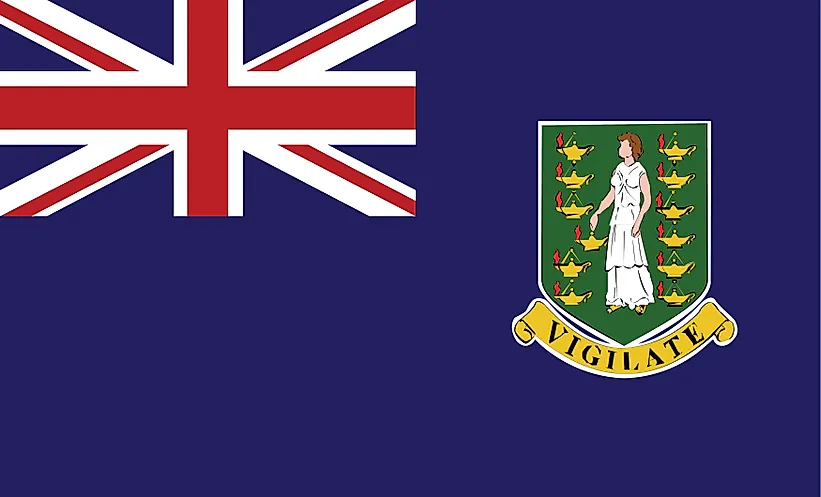
英領ヴァージン諸島
| 大陸 | 米州 |
| 資本金 | ロードタウン |
| 人口 | 34,232 |
| GDP | $5億円 |
| 一人当たりGDP | $42,300 |
| ダイヤルコード | +1-284 |
| ISOコード(2文字) | VG |
| ISOコード(3文字) | VGB |
英領ヴァージン諸島 風景






英領ヴァージン諸島について
カリブ海北東部に点在する50以上の島、小島、入り江からなる息をのむような英国海外領土、英領ヴァージン諸島へようこそ。この見事な群島は約153平方キロメートルの陸地に広がり、保護された海、安定した貿易風、島と島の間の短い航路など、船乗りのパラダイスを作り出しています。人口約3万人のBVIは、イギリス植民地時代の遺産とカリブ海の文化が融合したユニークな場所です。カリブ海の十字路に位置する戦略的な立地から、観光、オフショア金融、海洋活動の重要な拠点となっており、手つかずの自然環境は世界中の観光客を魅了し続けている。
地理的特徴と自然の美しさ
英領ヴァージン諸島の地形は火山起源の傑作で、透き通った海から緑豊かな丘が険しくそびえ立つドラマチックな景観を作り出しています。群島は4つの主要な島、トルトラ島、ヴァージン・ゴルダ島、アネガダ島、ヨスト・ヴァン・ダイク島と、数十の小さな島や入り江に分かれており、それぞれが独特の個性と魅力を持っています。
トルトラ島は最大の島であり、最も人口の多い島です。最高峰が海抜521メートルに達する壮大なセージ・マウンテン国立公園があり、周囲の島々のパノラマビューが楽しめます。島の北部の海岸線には、有名なケイン・ガーデン・ベイやスマグラーズ・コーブなどの手つかずの白砂のビーチがあり、南部の海岸線には保護された港や人里離れた入り江がある。
領内で2番目に大きな島、ヴァージン・ゴルダには、おそらくBVIで最も象徴的な自然アトラクション、ザ・バスがあります。この地質学的な不思議は、直径12メートルもある巨大な花崗岩の岩が、海岸線に沿って保護された海のプール、トンネル、洞窟を形成していることだ。迷路のように入り組んだ通路や部屋は、探検や写真撮影のための不思議な環境を作り出しています。
アネガダはカリブ海で3番目に大きなバリアリーフに囲まれた平らな石灰岩の環礁で、グループ唯一のサンゴ礁の島として際立っている。この島の手つかずのビーチは何キロにもわたって続き、島内にはフラミンゴやその他の野生動物の生息地となる塩の池がある。周囲のホースシュー・リーフには、何世紀にもわたって何百隻もの難破船が沈んできた。
ヨスト・ヴァン・ダイクは、規模こそ小さいものの、カリブ海で最も美しいビーチと活気ある島文化を提供しています。パウダースノーの砂浜と穏やかで透明な海が広がるホワイトベイは、カリブ海で最も美しいビーチのひとつに常に数えられており、島の有名なビーチバーは船乗りや観光客の間で伝説となっている。
文化遺産と伝統
英領ヴァージン諸島の文化は、アフリカ、ヨーロッパ、そしてカリブ海の土着の影響が魅力的に融合し、何世紀にもわたって発展してきた独特のアイデンティティを生み出しています。この文化遺産は音楽を通して表現され、特に伝統的なファンギ・バンドは、手作りの楽器を使い、島の生活や歴史を物語る感染力のあるリズムを奏でる。
領内の海洋の伝統は、当然のことながら地元文化の中心的役割を果たしている。毎年開催されるBVIスプリング・レガッタとセーリング・フェスティバルには世界中から競技者が集まり、伝統的な木造スループは代々受け継がれてきた技術で建造され続けている。これらの船は実用的な役割を果たすだけでなく、現在の島民と航海の祖先をつなぐ重要な文化的シンボルでもある。
BVIの料理の伝統は、周辺海域の恵みと、この地域を形成してきた多様な文化の影響の両方を反映しています。アネガダ・ロブスター、コンク・フリット、魚のフンギ和え(ポレンタに似たコーンミール・ベースのおかず)などが名物で、新鮮な魚介類は当然ながら地元のメニューの大半を占めている。領土の国民食である魚とフンギのマヨネーズソースは、アフリカ料理とヨーロッパ料理の伝統の融合を象徴している。
何世紀にもわたる植民地支配の影響にもかかわらず、BVIsの人々は語り部や音楽、地域の祝祭を通じてアフリカの遺産との強いつながりを保ってきました。1834年の奴隷制廃止を記念する奴隷解放祭は、自由と文化の回復力を祝うパレード、音楽、ダンス、料理が催される、領内で最も重要な文化行事です。
歴史の旅
英領ヴァージン諸島の歴史は、先住民の入植、ヨーロッパ人の植民地化、プランテーション経済、そして最終的には観光と金融サービスへの移行という複雑な物語を織りなしている。考古学的証拠によると、アラワク族や後のカリブ族を含むアメリカ先住民は、ヨーロッパ人が到着する何世紀も前からこの島々に居住しており、彼らの洗練された文化を垣間見ることのできる土器やその他の遺物を残している。
1493年、クリストファー・コロンブスがヨーロッパ人として初めてこの島々を訪れ、「サンタ・ウルスラと1万1千人の処女たち」と命名した。この島々に対するスペインの関心は限られたものであったが、オランダの海賊が17世紀初頭にヨーロッパ人初の入植地を築き、島々の保護された港を拠点としてスペインの海運を襲撃した。
17世紀後半にイギリスの支配が確立され、現在も形を変えて続く植民地関係が始まった。主に砂糖と綿花の生産を基盤とするプランテーション経済は、奴隷となったアフリカ人労働力に大きく依存し、領土の人口統計と文化的発展を根本的に形作った。1834年の奴隷制廃止後、多くのプランテーションは放棄され、島は経済衰退期に入った。
20世紀、BVIは農業経済から観光と金融サービス中心の経済へと劇的な変化を遂げた。1960年代にはセーリング・チャーターが導入され、クルージングに最適な条件が整った。一方、1980年代に成立した法律により、現在では経済の重要な柱となっているオフショア金融部門の法的枠組みが確立された。
現代の経済状況
今日の英領ヴァージン諸島は、主に観光と国際金融サービスを基盤に洗練された経済を発展させ、カリブ海地域で最も高い一人当たり所得を生み出している。同諸島は戦略的にプレミアム観光地として位置づけられ、マスツーリズムよりもヨット、ダイビング、高級宿泊施設に重点を置いている。
1980年代以降、金融サービス部門は大きく成長し、BVIは世界有数のオフショア金融センターとなりました。同領域のビジネス・フレンドリーな規制、税制の中立性、政治的安定性が国際的な企業や投資家を惹きつけ、同領域で法人化された企業は40万社を超える。
漁業や小規模農業のような伝統産業は、以前の世代よりも規模は小さくなったものの、文化的・経済的に重要な役割を果たし続けている。地元の漁師は島中のレストランに新鮮な漁獲物を供給し、小規模農家は主に地元で消費されるトロピカルフルーツ、野菜、家畜を生産している。
BVIの経済は、自然災害や外部からの経済的ショックに対する脆弱性など、小島嶼国共通の課題に直面している。2017年のハリケーン・イルマはこの脆弱性を実証し、インフラと観光セクターに未曾有の被害をもたらしたが、その後の回復には目覚ましい回復力と決意が見られた。
国際関係とグローバルポジション
英国海外領土である英領ヴァージン諸島は、国際情勢においてユニークな地位を維持している。英国が国防と外交に責任を持つ一方で、英領ヴァージン諸島は内政において重要な自治権を行使し、カリブ海地域内外で独自の関係を築いてきた。
特に隣接する米領ヴァージン諸島との結びつきが強く、住民は買い物や娯楽、家族旅行などで定期的に両島を行き来している。こうした密接な経済関係を反映し、米ドルが公式通貨となっている。
BVIは、カリブ共同体(CARICOM)や東カリブ諸国機構(OECS)の準加盟国として、さまざまな地域組織に参加している。また、特に気候変動への適応や持続可能な開発など、小島嶼国に影響を与える問題への取り組みにおいて指導的な役割を果たしている。
BVIと英国の関係は、地方の自治と憲法上の関係の利点との適切なバランスについて継続的に議論しながら、進化し続けている。このダイナミズムは、カリブ海地域全体に共鳴する脱植民地化と自決に関するより広範な問題を反映している。
ご存知でしたか?
- 英領ヴァージン諸島には、カリブ海で最も古い歴史を持つ壷蒸留所のひとつ、コールウッド・ラム蒸留所がある。
- この海域には、1867年のハリケーンで沈没した英国郵船RMSローヌ号の沈船があり、現在では世界有数の沈船ダイビングスポットとして知られている。
- 英領ヴァージン諸島には川や小川がなく、淡水は雨水の収集と海水淡水化に頼っている。
結論
英領ヴァージン諸島は、自然の美しさ、文化的回復力、経済革新の証しです。この驚くべき群島は、歴史的な課題を独自の強みに変え、海洋遺産と発展への前向きなアプローチの両方を重視する社会を作り上げてきました。絶好のセーリング環境から盛んな金融セクター、伝統的なファンギ音楽からワールドクラスのリゾートまで、BVIは量よりも質で定義されるカリブ海ならではの体験を提供しています。この魅惑的な島々は、21世紀の複雑な時代を航海し続けていますが、歴史を通じてその特徴を定義してきた独立精神と海との深いつながりを忠実に守り続けています。